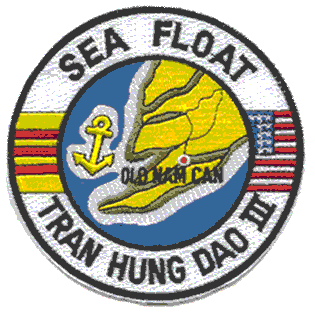
| Sea Float |
| Ca Mau Peninsula |
| Cua Lon and Bo De Rivers |
 |
One of the more egregious areas of northern presence in South Vietnam was the Ca Mau Peninsula. Admiral Zumwalt characterized this part of the country as "... a place of streams and mangrove swamps, hard to get to, and even harder to get into, at the extreme southern tip of Vietnam. The US command had regarded the peninsula as so irremediably enemy country that it evacuated as many of the inhabitants as possible and then bombed it with B-52s." |
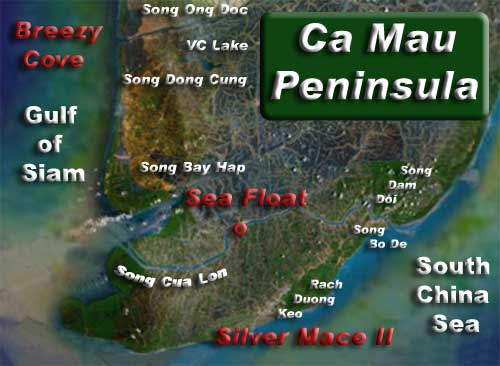 |
A particularly hard hit area was the Nam Can forest west of the intersection of the Cua Lon, Dam Doi and Bo De rivers. The town of Nam Can had been overun during the Tet Offensive of 1968, and was completely destroyed during several hard fought battles to evict the northern forces. Despite a concentrated effort in early 1969, including a number of Market Time Raider operations to insert Vietnamese troops ( eg Song Ong Doc ) and a large operation by three battalions of Vietnamese Marines along with thirteen Swift Boats, supported by aircraft, known as Silver Mace II , the entire area remained doggedly in the control of the North Vietnamese. |
 |
With the support of COMMACV {General Abrams}, COMNAVFORV {Admiral Zumwalt} hit upon the extraordinary concept of constructing a floating base near the intersection of the three rivers to establish a permanent presence in this "indian territory" in order to bring some semblance of tranquility to the region. This inovative tactic could potentially allow the populace to return, facilitate the rebuilding of Nam Can and perhaps restore economic vitality to the area. |
| Image courtesy of John Yeoman |
Several pontoon barges, called ammis, were lashed together at a naval support base near Saigon. Berthing facilities and equipment were installed to provide everything needed to allow in excess of one-hundred-fifty personnel to prosecute and fight a protracted campaign up and down the two rivers. The entire base was loaded on LSDs, carried up the Bo De River from the South China Sea in June 1969, and anchored using a six-point mooring system in the middle of the Cua Lon River adjacent to the vacated town of Nam Can. |
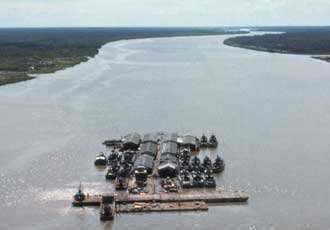 |
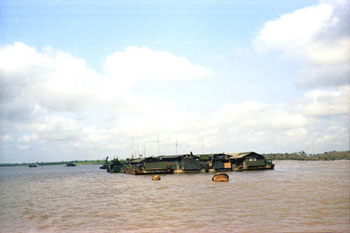 |
|
Image courtesy of John Yeoman |
Image Copyright� 2003 by William L. Rogers |
Sea Float, as the base was named, was manned by both American and Vietnamese military personnel supporting water and airborne craft of very diverse capabilities: PCFs, PBRs, the large "Ashville Class" Patrol Gunboats, Riverine craft (ATCs and ASPBs), VNN Yabutas, and other Special Forces Craft. Two of the USN Seawolf helicopter gunships were also permanently based on the "floating fortress." In keeping with the emerging policy of Vietnamization, the commander of the base was an American while the deputy commander was South Vietnamese. | 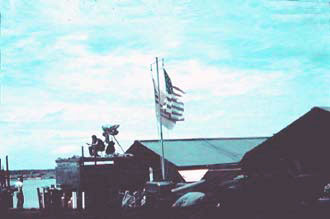 |
Life aboard Sea Float was sparce, fast paced, and held daily dangers. However, most daylight hours allowed a certain amount of normal human activities to take place. Even on the unusual platform where the potential for violence was possible at any moment. Initial Swift Boat crews were volunteers, and a regular rotation was established so that personnel could gain some respite from the high level of daily enemy contact experienced during a tour at the base. |
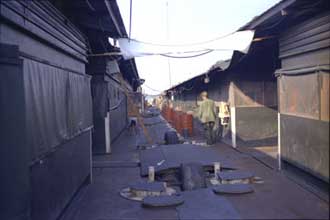 |
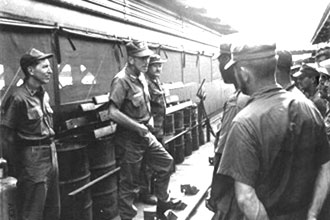 |
|
|
Sea Float Mainstreet Image Copyright� 2003 by William L. Rogers |
Admiral Zumwalt makes a visit Image courtesy of the Texas Tech Zumwalt Collection |
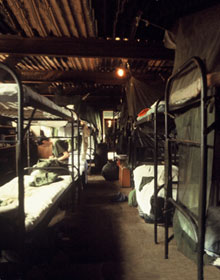 |
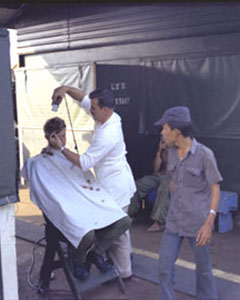 |
|
|
Berthing Quarters Image courtesy PHCS Athur R. Hill |
Barber Shop Image Copyright� by William L. Rogers |
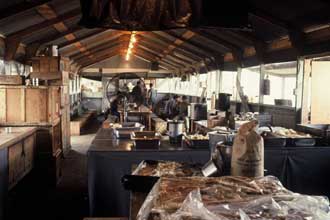 |
 |
|
|
Main Galley Serving Gourmet Meals Image courtesy of Arthur R. Hill |
Put Another Shrimp on the Barbee Image courtesy of Tom Byrnes |
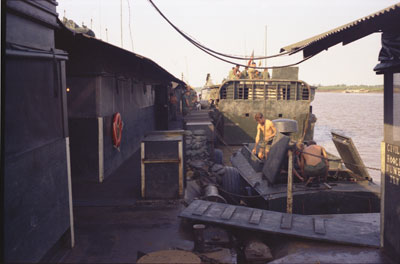 |
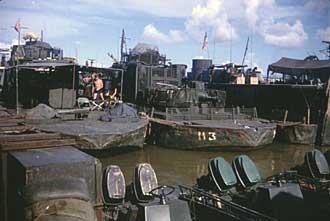 |
|
|
A SEAL Team Assault Boat (STAB), a Riverine Craft Armored Troop Carrier (ATC) and a Swift alongside receive maintenance prior to their next mission Image Copyright� 2003 by William L. Rogers |
Other Riverine Craft nested at Sea Float: Kenner skimmer craft in the foreground STABs, Monitors, ATCs & Zippos in back Image courtesy of Tom Byrnes |
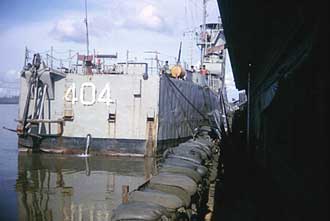 |
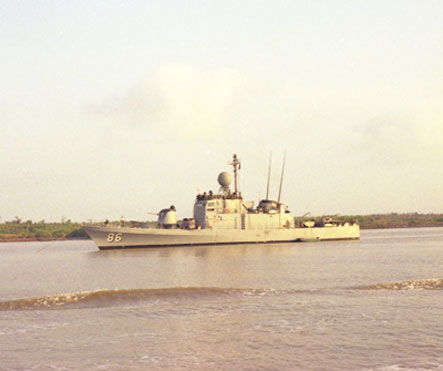 |
|
|
LSSL-404 providing replenishment for Sea Float Image courtesy of Tom Byrnes |
USS Antelope (PG-86) on the Cua Lon near SeaFloat Image Copyright� 2003 by William L. Rogers |
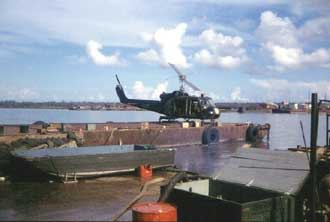
| 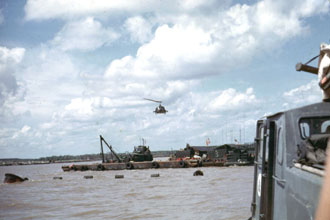 |
|
|
Seawolf helicopter prepares for takeoff Image courtesy of Tom Byrnes |
Seawolf helicopter landing on SeaFloat Image courtesy of Gary Carpenter |
There was more to life on board Sea Float than daily routine tasks. Despite perimeter defenses and aggressive patrols by the attached units, the surrounding landscape allowed the enemy to maintain constant pressure on the base and its occupants. One of the ways to protect against sappers and floating mines was to drop percussion grenades randomly over the side. But the darkness always brought uncertainty with the need for heavier weapons support to maintain security at the installation. |
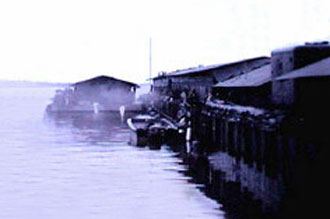 |
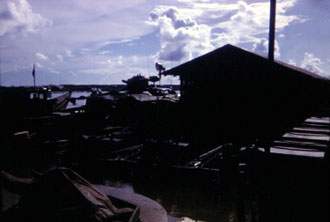 |
 |
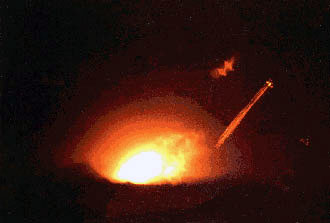 |
The Swifts stationed at Sea Float were very active in patrolling the main transportation routes of the broad Cua Lon, Bo De, and Dam Doi rivers as they flowed into the Gulf of Siam and the South China Sea on etither side of the Ca Mau peninsula. Along with the other Riverine, PBR and Secial Forces craft, they also entered and kept careful watch on the many small canals and tributaries that connected to these principal waterways. Defoliation of the areas off of the main rivers was used to deny the use of camoflage by the enemy. |
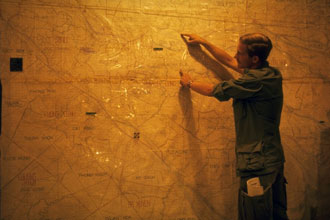 |
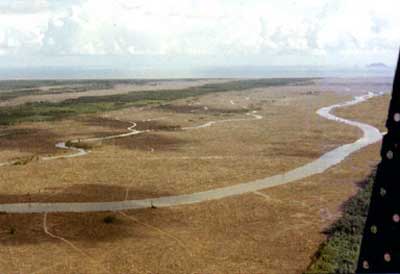 |
|
|
Bill Stanard giving a Swift Patrol briefing Image courtesy of John Yeoman |
Patrol area southwest of Sea Float with many canals Image courtesy of Tom Byrnes and Ed Lefebvre |
As with other Swift bases, all patrols required that the Sea Float boats be adequately prepared before departing on a mission. Maintaining an agressive schedule and coverage on the rivers meant that the crews had little time to recover upon returning until it was time to go out again. |
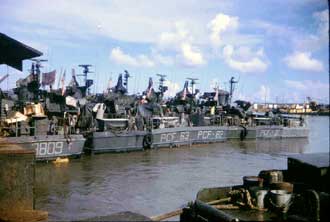 |
> | 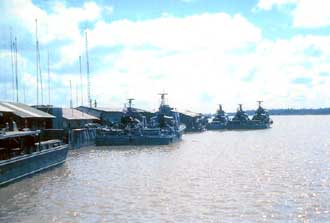 |
| Image courtesy of Tom Byrnes | Image courtesy of James Sewart |
| Off duty Swift Boats nested outboard of Sea Float |
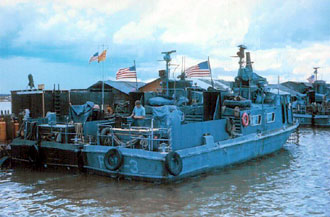 |
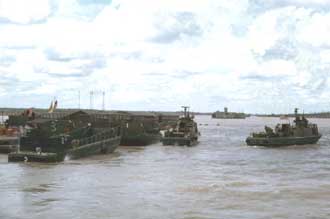 |
|
|
Crews prepare their boats for the next patrol Image courtesy of the Texas Tech Vietnam Archives |
PCF-10 and PCF-31 depart for another day on the river Image Courtesy of Gary Carpenter |
No longer operating as single entities, the boats would make their aggressive patrols in pairs or in conjuction with the PBR's and Riverine Forces to pro-actively pursue the enemy forces present throughout the Nam Can forest region. |
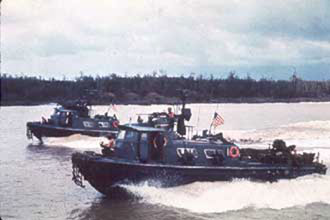 |
 |
|
|
Swifts patrol the Cua Lon in tandem Image courtesy of Ed Lefebvre |
Mutual support was the key to river operations Image courtesy of Ken Turgeon |
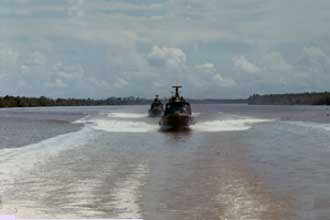 |
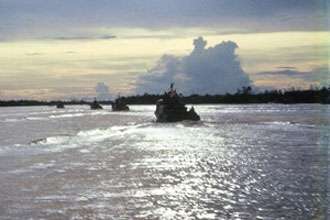 |
|
Swifts doing their thing: Checking out the river banks Images courtesy of John Yeoman and Lou Ellingson |
In addition to the main rivers, the constricted space on the side waterways contained many uncertainties on or near the narrow river banks. So encounters with entrenched NVA units were a common occurrence. One never knew what was waiting just around the next bend in the river. And entering a klong or side canal was best accomplished with extreme caution. |
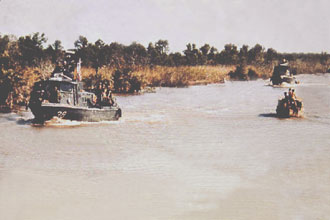 |
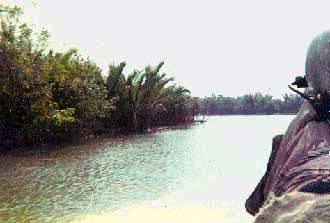 |
|
| Image courtesy of Ed Lafebvre | Image courtesy of Reg Ritter |
| What is waiting in the tall grass or around the next bend? |
 |
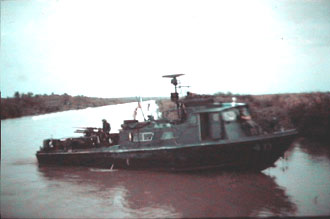 |
|
|
"Maybe we will let Mikey go in there first" Image courtesy of Tom Forrest |
Actually entering a canal was was done very carefully |
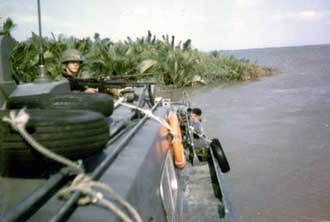 |
 |
|
|
"I think I will just kinda step back here" Image courtesy of Virgil Erwin |
"Watch out for an ambush from either bank!" Image courtesy of John Yeoman |
 |
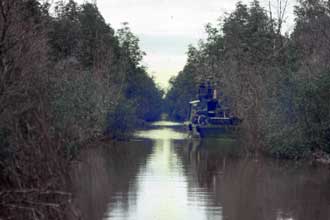 |
|
|
!! FOLLOW ME !! Image courtesy of Virgil Erwin |
""I'm SURE I saw some bad guys head down this canal" Image courtesy of John Yeoman |
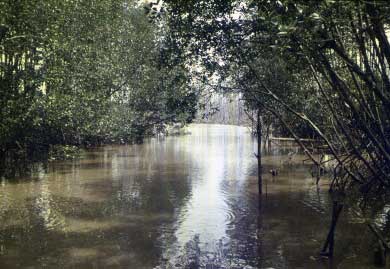 |
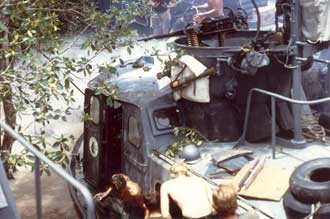 |
|
|
"Things are starting to get kinda creepy down here!" Image courtesy of John Yeoman |
"Aw Rite! You guys go ashore and investigate!" Image courtesy of Gary Carpenter |
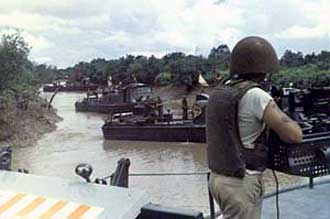 |
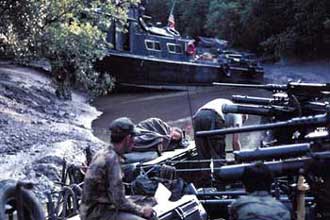 |
|
|
"Naw! Let's just wait and just let them come to us!" Swifts viewed from USCGC Point Cypress (WPB 82326) Image courtesy of Larry Webb |
Sitting in the klong by the bay Waiting for the tide to come in Image courtesy of Fred Short |
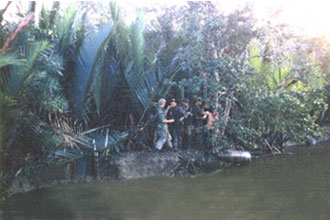 |
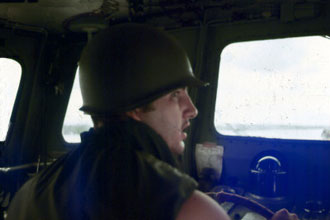 |
|
|
A recovered sunken 750 pound bomb is dragged ashore It was configured as a command detonated mine Image courtesy of Lou Ellingson |
Is this REALLY what I signed up for? Image courtesy of John Yeoman |
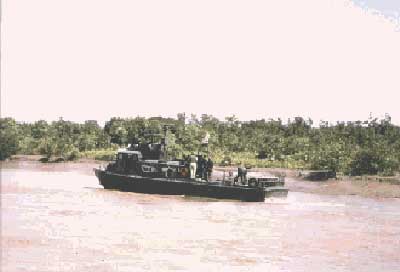 |
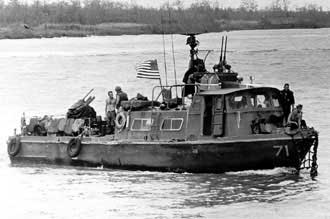 |
|
|
Chieu Hoi speakers blasting away at the river bank Image courtesy of Tom Forrest |
Spare flak jackets added at least some armor protection |
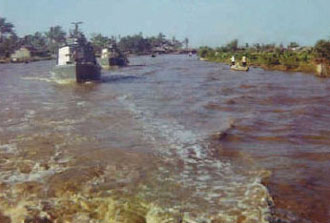 |
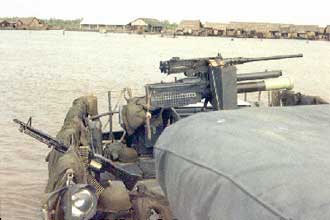 |
|
 |
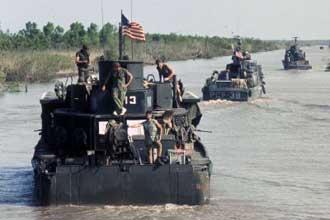 |
|
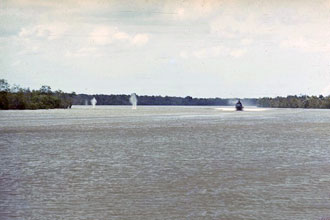 |
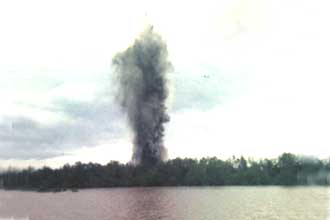 |
|
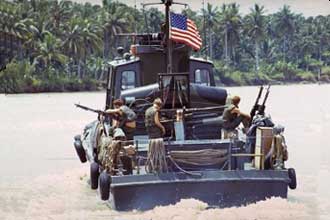 |
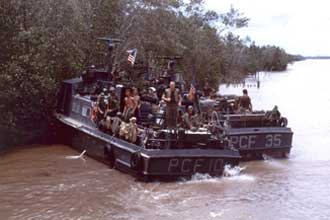 |
|
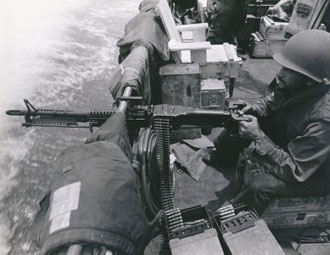 |
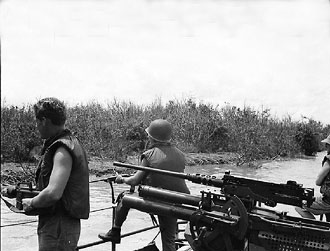 |
|
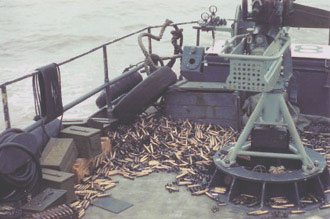 |
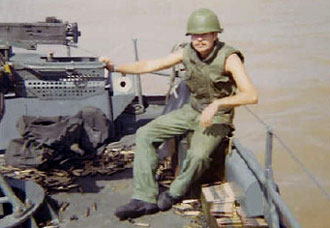 |
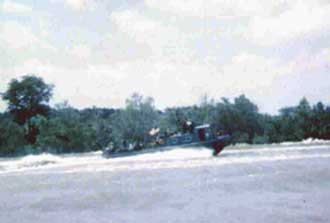 |
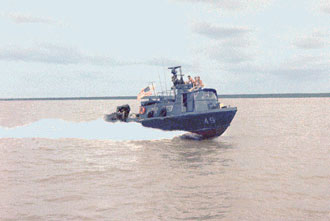 |
|
|
One last pass to thumb your nose at the bad guys Image courtesy of Ken Turgeon |
Then up on the plane in the Cua Lon back to Sea Float Image courtesy of Doug Reglin |
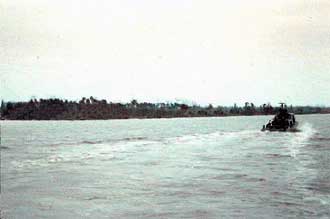 |
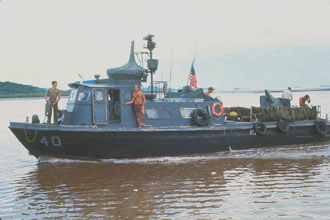 |
|
|
"Rolling down the river! Heading for the barn!" Image courtesy of the Texas Tech Vietnam Archives |
PCF 40 crew cleans up before ending their patrol Image courtesy of Tom Levour |
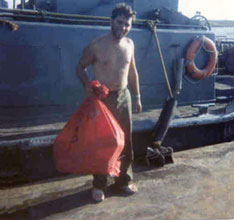 |
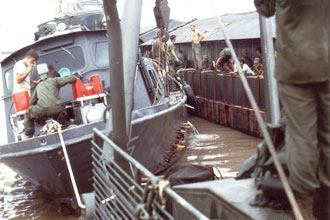 |
|
|
After a patrol, sometimes there was mail waiting Image courtesy of Roger Brooks |
Other times, repairs to battle damage were required Image courtesy of Gary Carpenter |
| And the concept worked. |
|
Slowly the presence of the enemy and attacks on the base and surrounding area diminished The local inhabitants came to rely on the base and provided information about enemy activities Waterborne trade with other regions was re-established using the rivers to transport goods And not only was a new Nam Can re-occupied, but other hamlets sprung up in nearby areas |
|
In the final days of 1969 Solid Anchor was born |
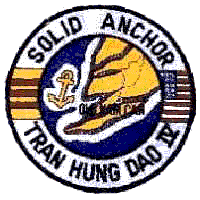 |
Establishing a permanent land base at Nam Can |
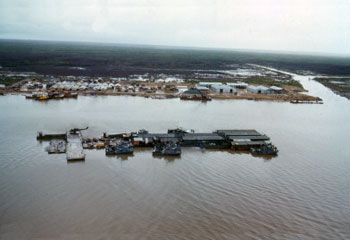 |
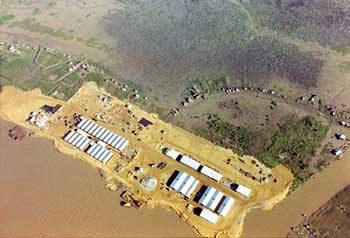 |
|
| Image courtesy of John Yeoman | Image courtesy of Ron Zimmerman |
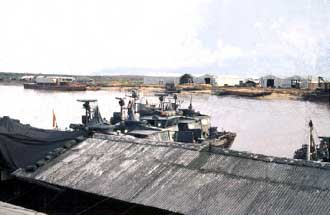 |
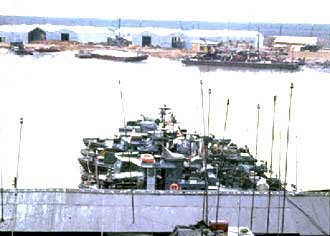 |
|
View of Solid Anchor from Sea Float Images courtesy of Larry Rowin |
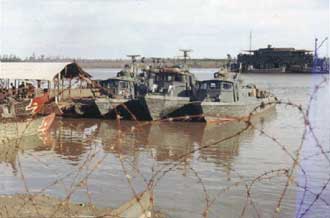 |
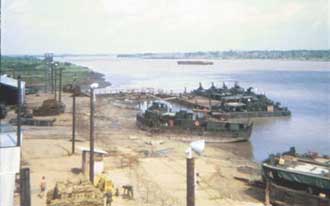 |
|
|
Swift Boats and Yabutas nested at Solid Anchor dock Image courtesy of Tom Byrnes and Ed Lefebvre |
Swifts and other craft moored after Sea Float departure Image courtesy of the Texas Tech Vietnam Archives |
| What was once a totally hostile area became a success of pacification |
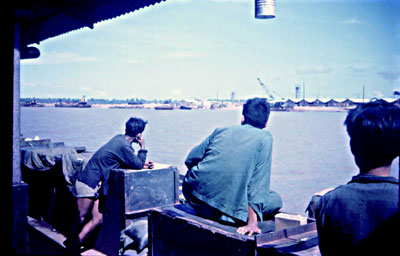
Three Hoi Chanhs peer at Solid Anchor from Sea Float
Image courtesy of Tom Byrnes
|
| On April 1 1971, the VNN took command of Solid Anchor using the name Tran Hung Dao III |
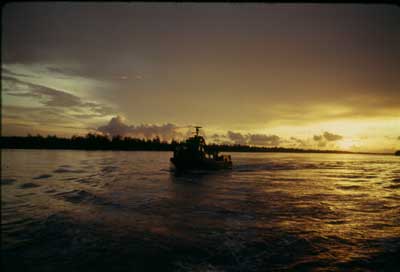 Image courtesy of John Yeoman |
| The U. S. Navy's direct involvement in Swift Boat operations was finally over |
But the price of this success was high. Deprived of their main defense of maneuverability and speed in the constricted tributaries, and with only the insignificant quarter inch aluminum skin construction for armor protection, the Swifts were easy targets for the B-40 rockets and other heavy weapons utilized by the enemy from their hidden bunkers on the close by river banks.
These images of the damage to
Guy Gugliotta's PCF-50,
sustained while on duty at SeaFloat, attest to the vunerability of the Swift Boat when deployed in a role beyond that
for which it |
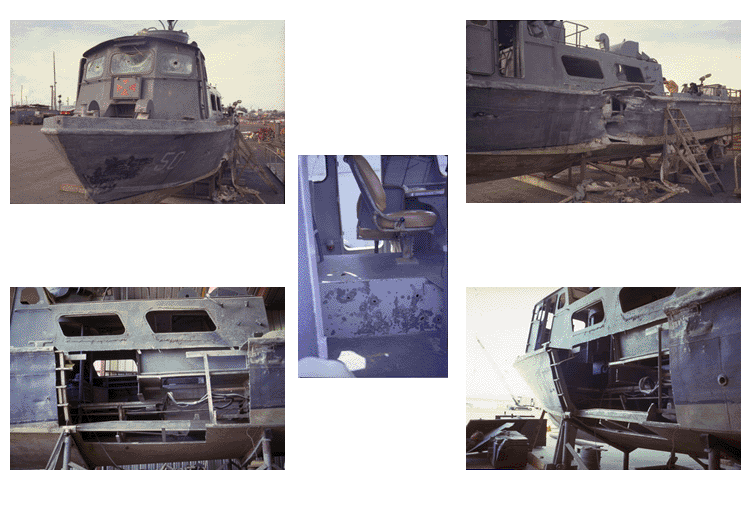 |
| Images courtesy of William L. Rogers and John Yeoman |
Sea Float Artwork
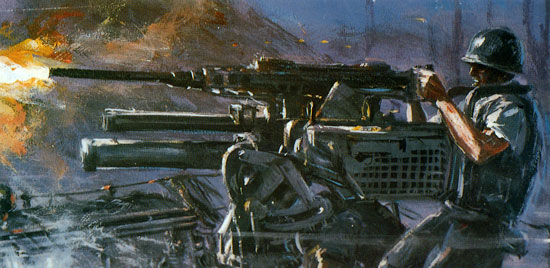 "Firefight" by John Steel |
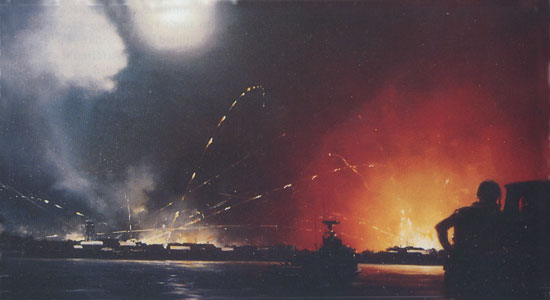 "Incident at Old Nam Cam" by R. G. Smith |
This web site is Copyright � 2002 by Robert B. Shirley. All rights reserved. Click on image to return to the homepage
|